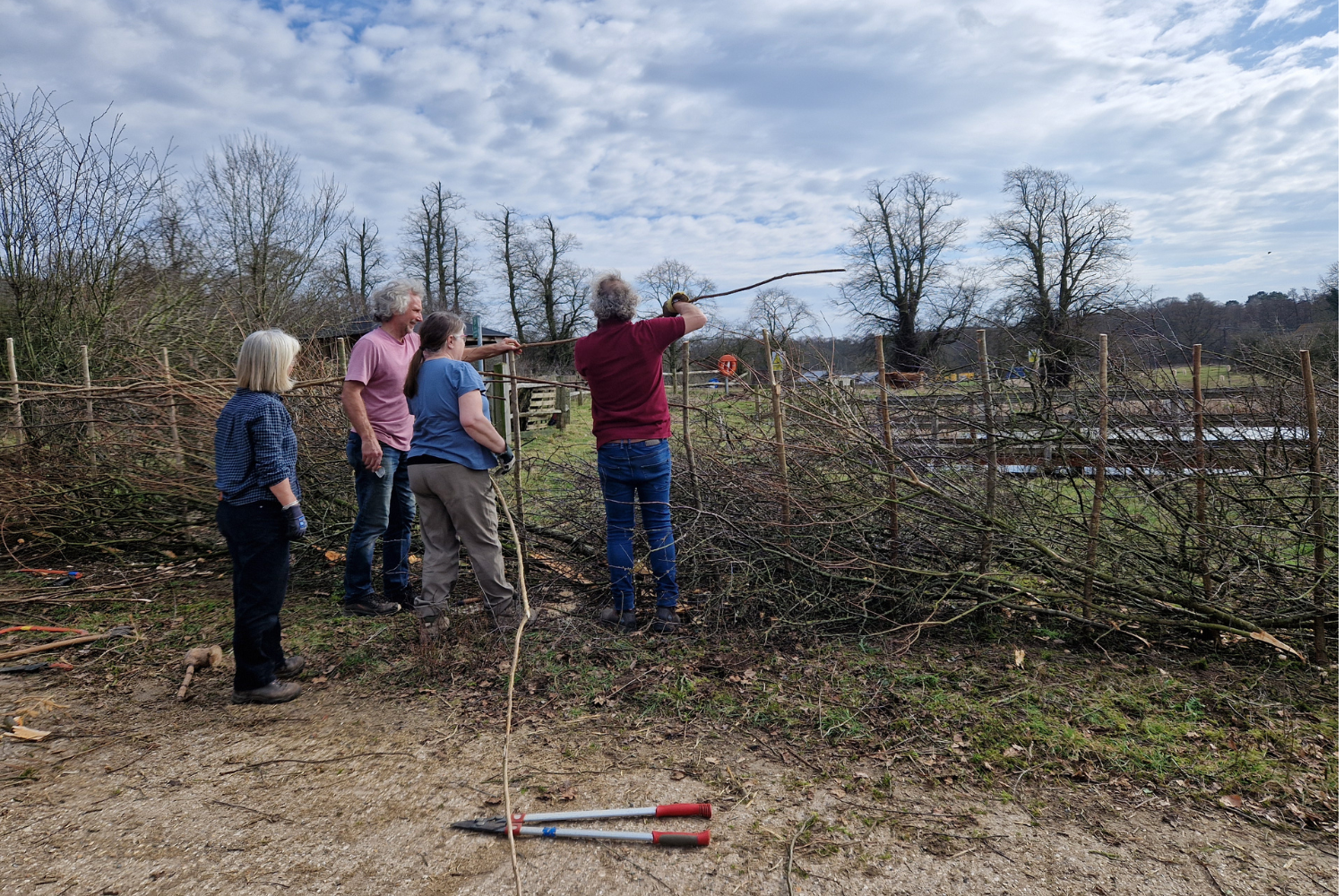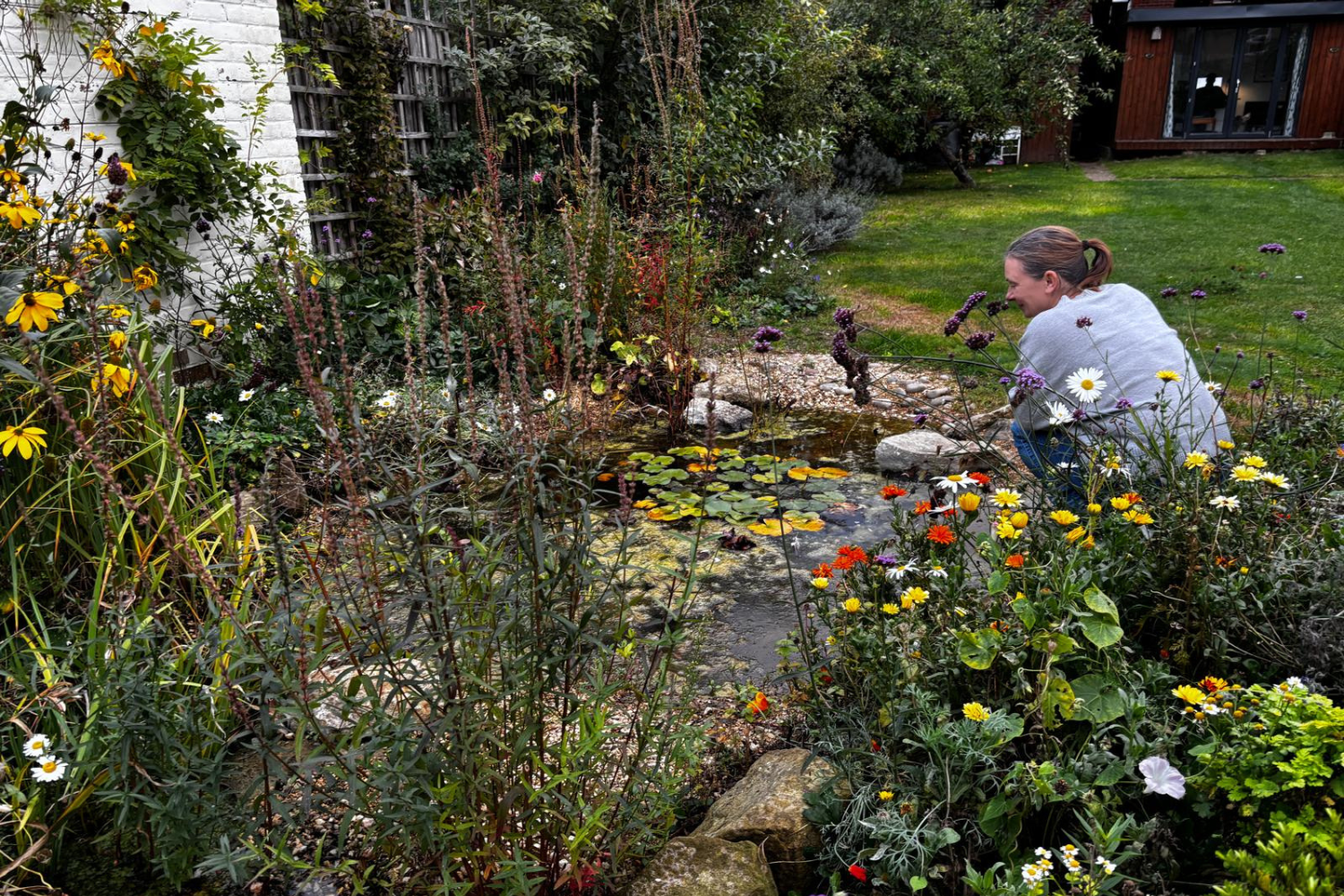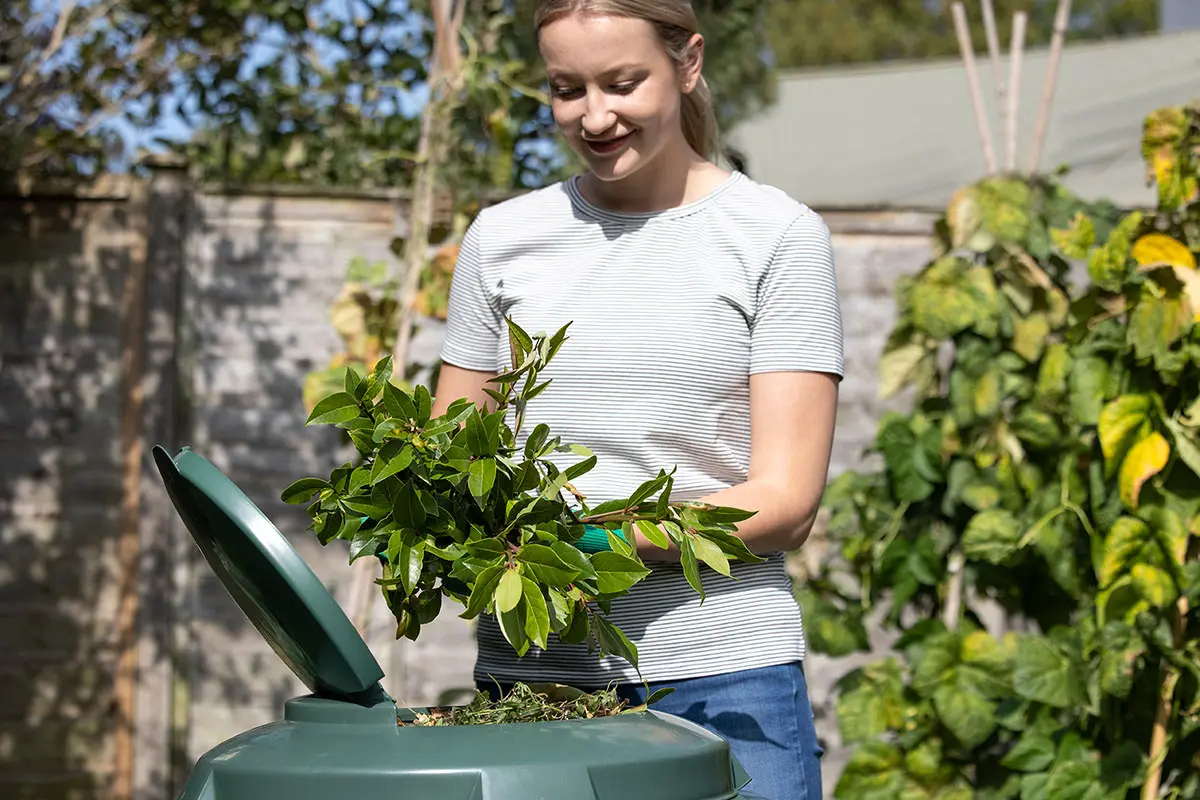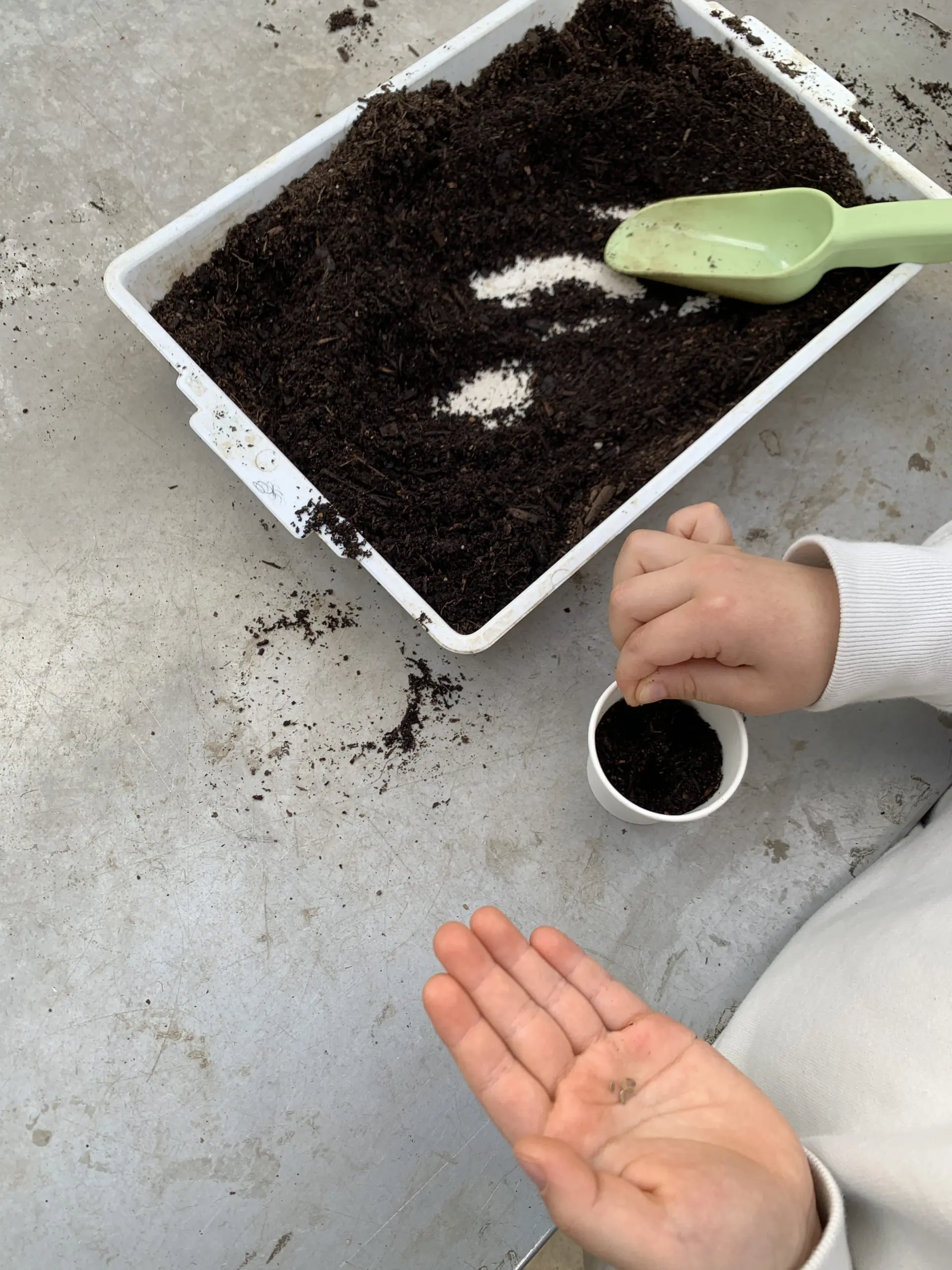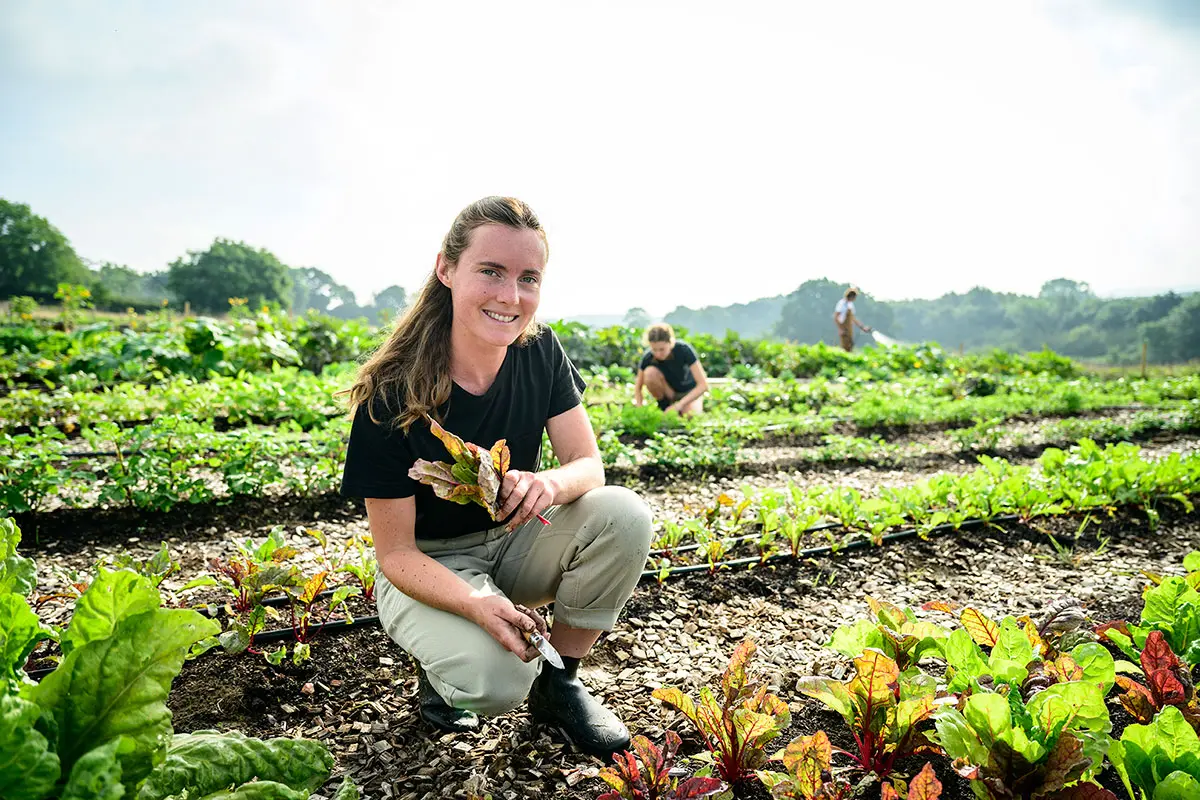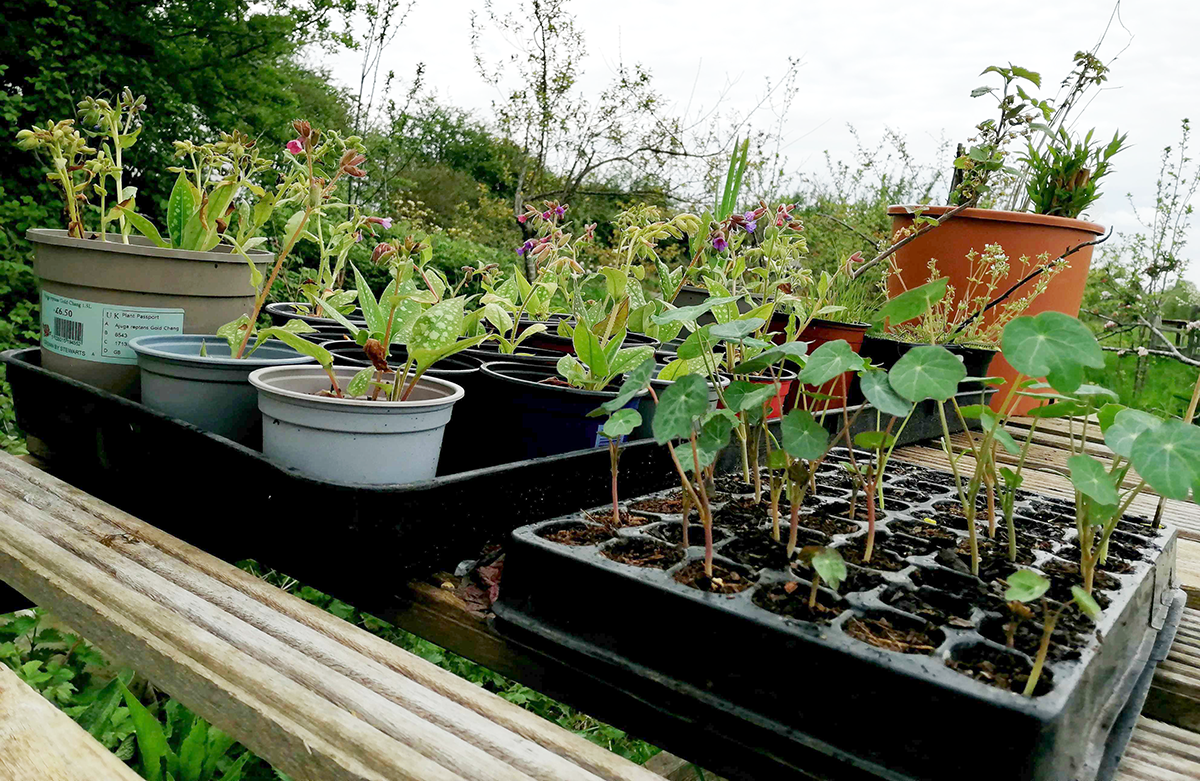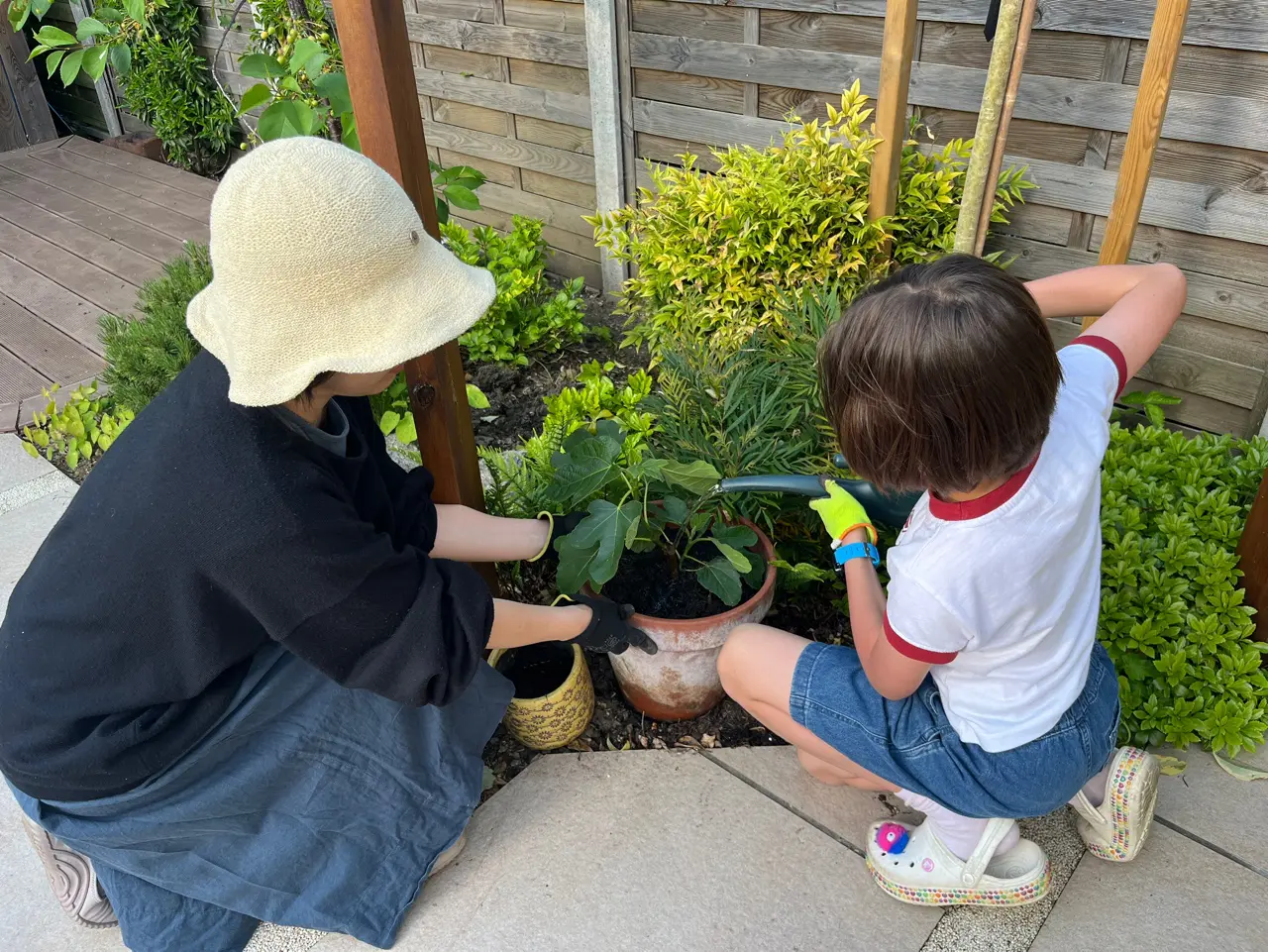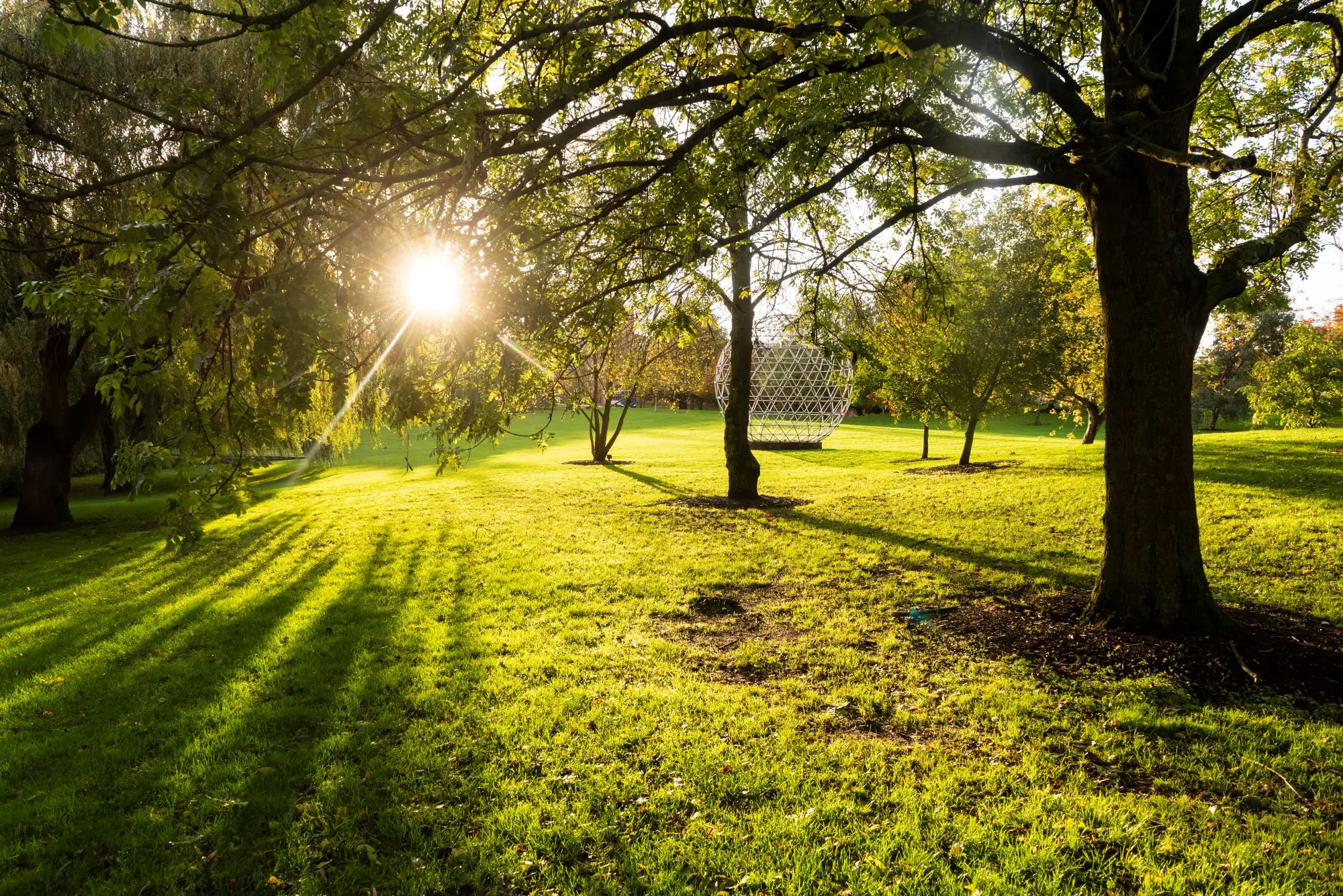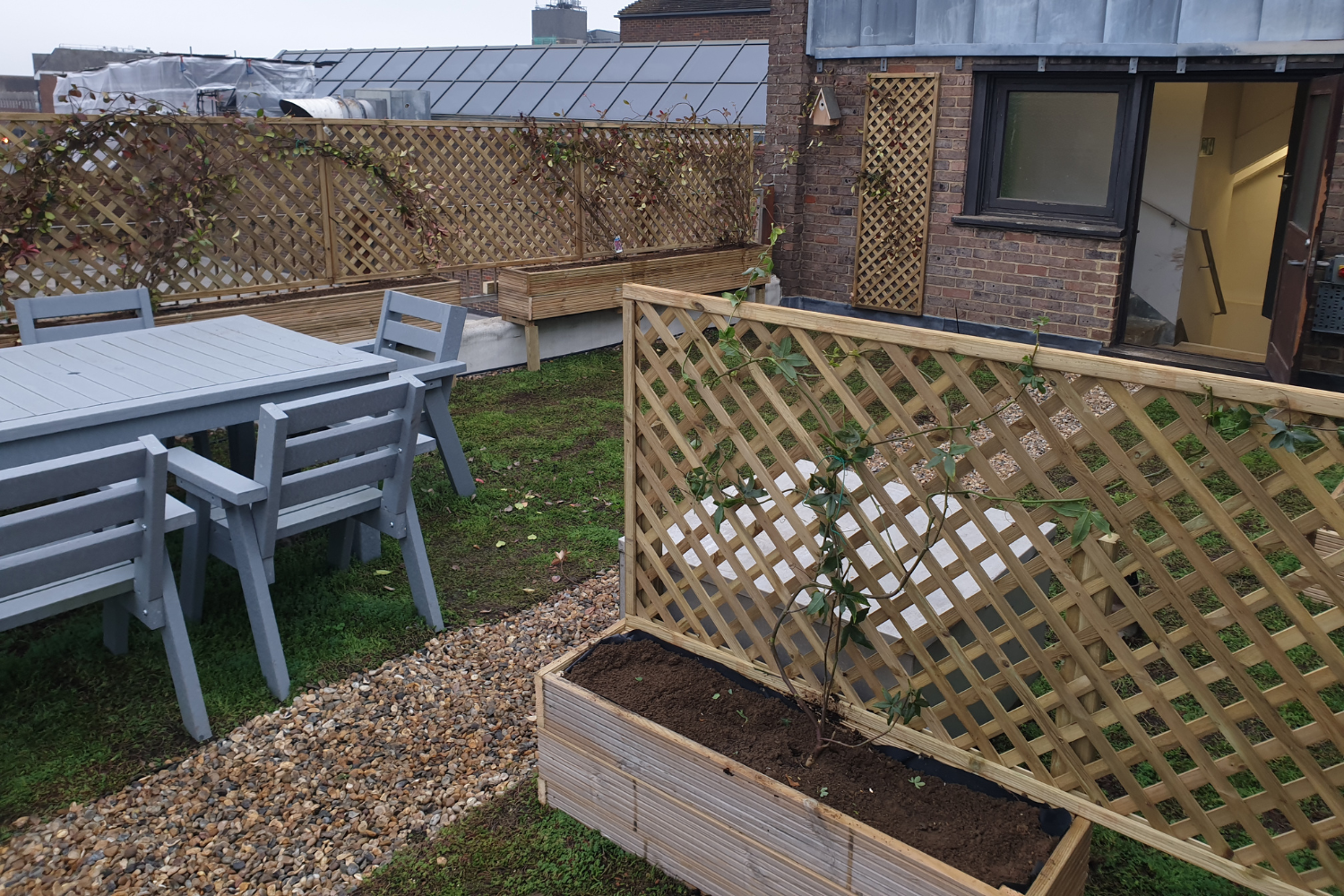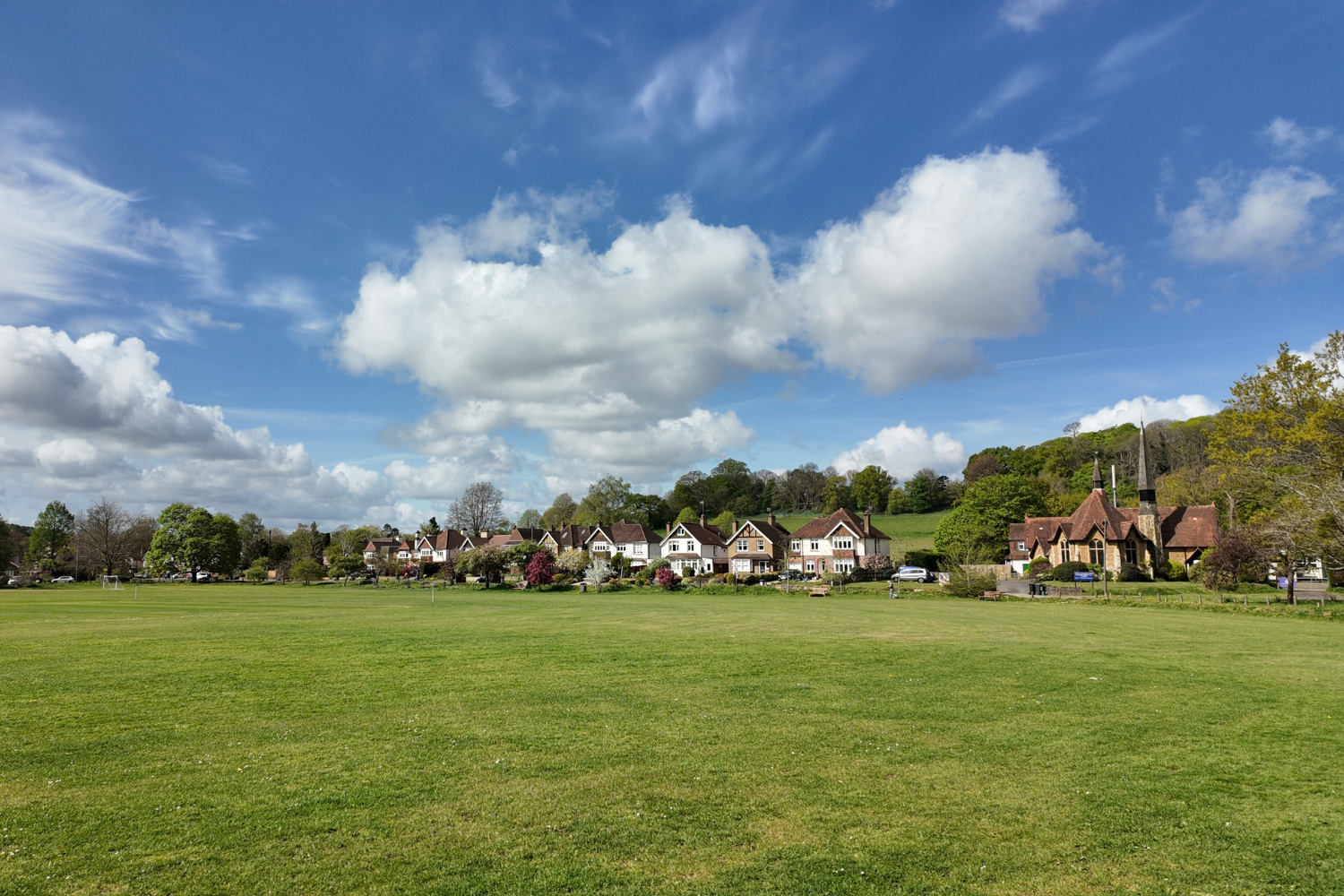The adoption of Nature-based Solutions (NbS) is rapidly increasing in the UK and beyond, and could help us avoid nearly £300 billion in damage and loss by 2050, by reducing hazards associated with our changing climate. Managing your land for nature is a great way to help address societal challenges by working with nature to restore natural processes, resulting in benefits to both nature and communities. Examples range from planting hedgerows and restoring wildflower meadows to installing a green roof or creating a flood storage pond. Surrey Wildlife Trust's State of Nature Report shows that 11% of our native species have gone extinct in the last few decades, and our landscape is becoming ever more at risk of experiencing devastating floods and wildfires. Our friends at Surrey Wildlife Trust are a great source of information on nature-based solutions, and they have lots of handy tips on how you can adapt your land management to support wildlife and reduce the impact of your activities:
-
Consider what habitats you have already and how they are being managed. For example, would your meadow benefit from reduced mowing over the summer months to encourage more wildflower growth and attract pollinators? Also think about whether there is scope for habitat creation (where appropriate). For example, planting hedgerows along fence lines is a great way of greening up your field boundaries while also providing additional food and shelter for wildlife.
-
Check you are following government guidelines for storing and disposing of agricultural waste. This will help to protect our waterways from agricultural pollution caused by runoff. There are also NbS that can help with reducing the impacts of agricultural waste, such as creating vegetated buffer zones along the edge of ponds and watercourses to filter out pollutants from runoff before they reach the water.
-
Explore nature-friendly farming options, such as regenerative farming, to improve soil health and reduce reliance on chemical pesticides and fertilizers. This will help to boost biodiversity and increase resilience longer-term.
-
Connect with your local community: Join forces with your neighbours, contact local environmental groups, and share expertise (and people-power) to expand your impact beyond your own landholding.
Protecting nature and wildlife ranks as the number one priority for UK residents when asked about policies to tackle climate change and environmental degradation. In Surrey, 11% of our native species have gone extinct in the last few decades, so it's important that we don't just rely on government policy, but that we take collective actions to reverse nature loss.
Read more about making use of your gardenYou might have come here to find out how to throw away your garden waste - but did you know you can make useful resources out of your green waste? Instead of chucking your green waste, why not try turning it into compost instead?
Read more about garden wasteWhat's our planet's most efficient natural method of storing carbon? You might be thinking forests - maybe the Amazon? While the ocean and the forests are our largest 'carbon sink', peatlands are another important natural carbon sink.
Read more about good compostBusiness growth in Surrey will create job opportunities and support communities. And with the ever-increasing demand for green skills and technology, now is a great chance to support businesses to move towards a sustainable economy.
Read more about sustainable business growthBusinesses play a huge role in shaping the future our society, and many of them – from multinationals to sole traders – are on a journey to make their business future-proof. This includes fully understanding the impact of your business and building resilience to climate-related impacts such as extreme weather as well as risks to the supply chain.
Read more about net zero businessSurrey is a fairly rural county, yet we have much less farming than many parts of the UK: About 20 to 30% of land in Surrey is used for agriculture, compared to over 75% in some counties. Local food production is extremely beneficial for our health, economy, and the local environment.
Read more about land subsidiesGetting your hands dirty in nature is a proven recipe for uplifting your mood. You can create a beautiful garden at your doorstep but another popular way of doing this is to join a local community garden.
Read more about joining a community gardenMany companies are adopting a more holistic approach in their businesses by considering their impact on the local community and surroundings.
Read more about becoming a B CorpLoads of businesses are taking steps to reduce their impact and there are many ways that organisations can join collaborative efforts to make Surrey a cleaner and healthier place to live.
Read more about encouraging sustainable practice at workBusinesses need to be mindful of the impact that their operations and management can have on their climate credentials. And this includes the management of supply chains as well.
Read more about ensuring your supply chain is ethicalReducing food waste at work is a fantastic way for any organisation to save money, engage your employees in better waste practices, and reduce those tricky consumption emissions in line with your Net Zero objectives.
Read more about reducing food waste at workGardening has been enjoyed throughout history as a way to create beautiful spaces for people while looking after nature.
Read more about looking after your gardenFind out how you can save water in your garden and help to reduce the risk of UK water shortages...
Read more about saving water in your gardenWe need to protect and restore around 50,000 hectares of newly identified land in Surrey to do our bit for the national picture - not easy when lots of Surrey already has protection of some kind.
Read more about supporting wildlife through gardeningRising energy bills shouldn't undermine your business ambitions.
Read more about saving on utility bills for your businessBy reducing water usage, your business not only cuts costs but also contributes to a resilient economy and a stable water supply in Surrey.
Read more about saving water at workSwitching to a 100% renewable energy supplier is one of the simplest and most impactful steps you can take.
Read more about using renewable energy at workBy educating pupils about reducing food waste and fostering a culture of sustainability, we can make meaningful progress towards a healthier population and a more sustainable future.
Read more about reducing food waste in schoolsBy educating pupils about reducing food waste and fostering a culture of sustainability, we can make meaningful progress towards a healthier population and a more sustainable future.
Read more about improving biodiversity and growing your businessBy educating pupils about reducing food waste and fostering a culture of sustainability, we can make meaningful progress towards a healthier population and a more sustainable future.
Read more about supporting local sustainability projects through corporate social responsibilityWe all want to protect rare and special places across Surrey - from our ancient yew trees, to bluebell woods, the treasured National Landscape, and even a hidden waterfall!
READ MORE..Guidance and grants for creating a workplace travel plan
Read more about creating a travel plan for your organisation




